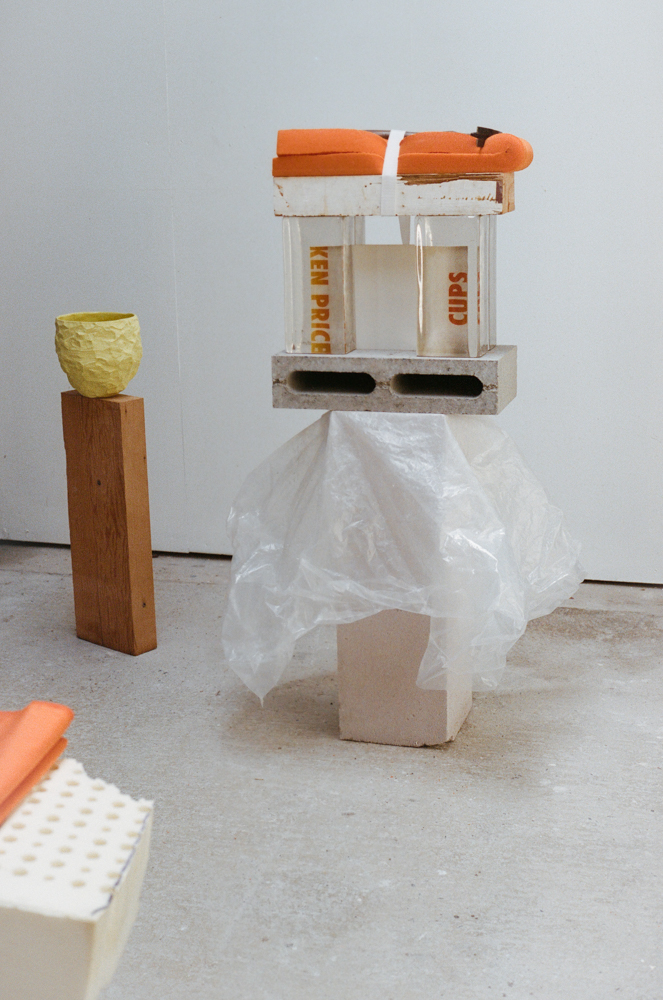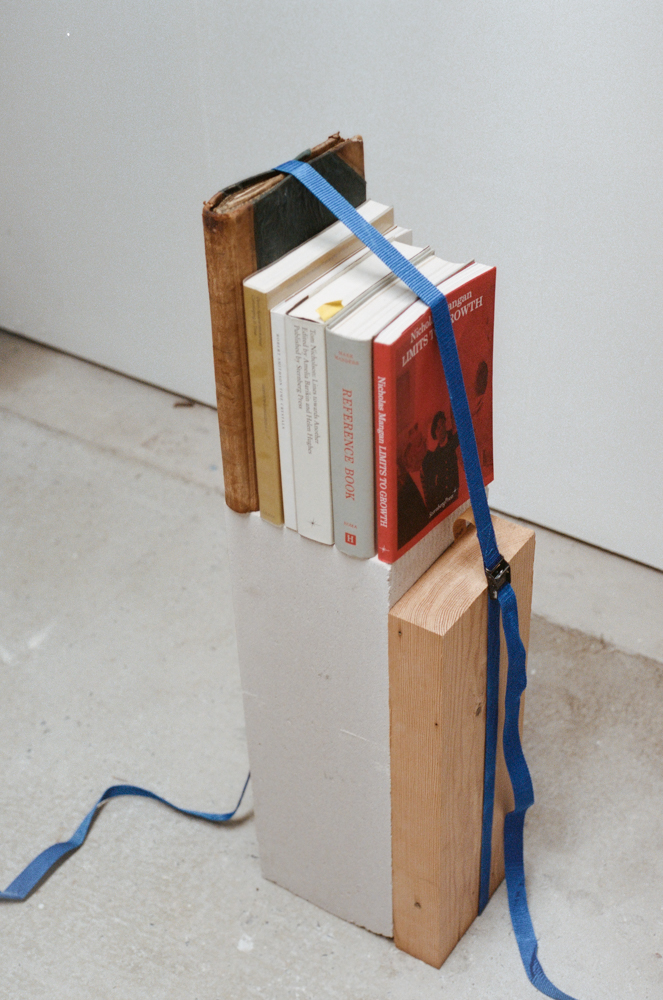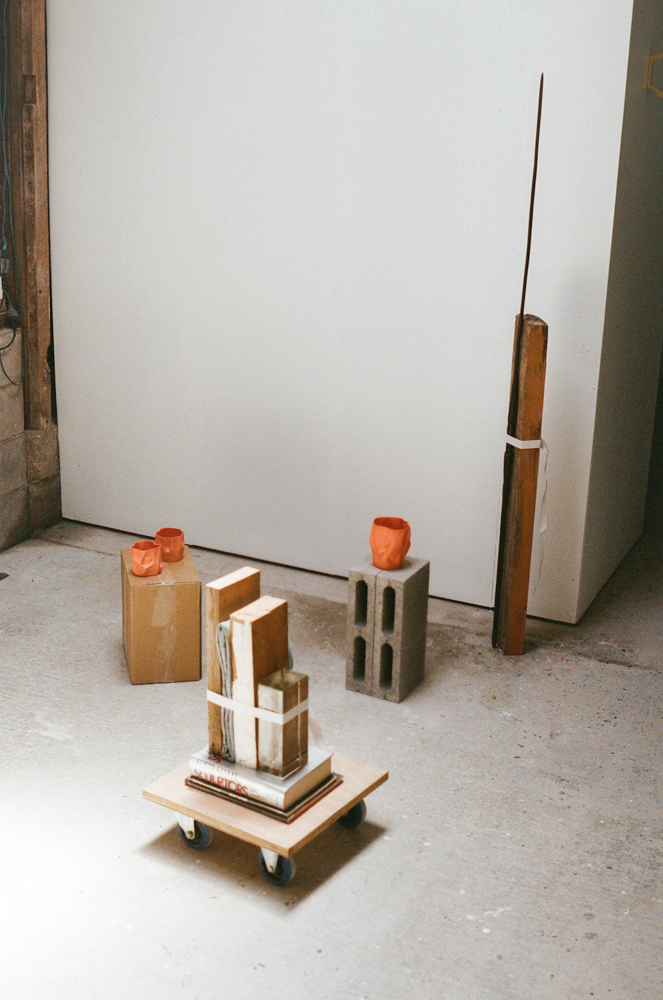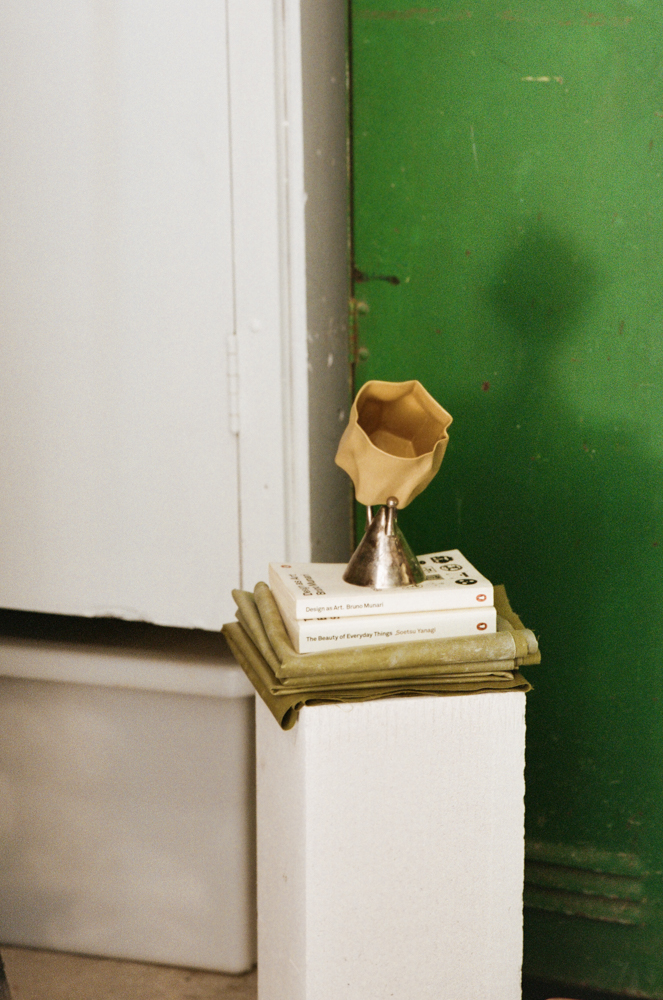Studio LFW
Studio LFW
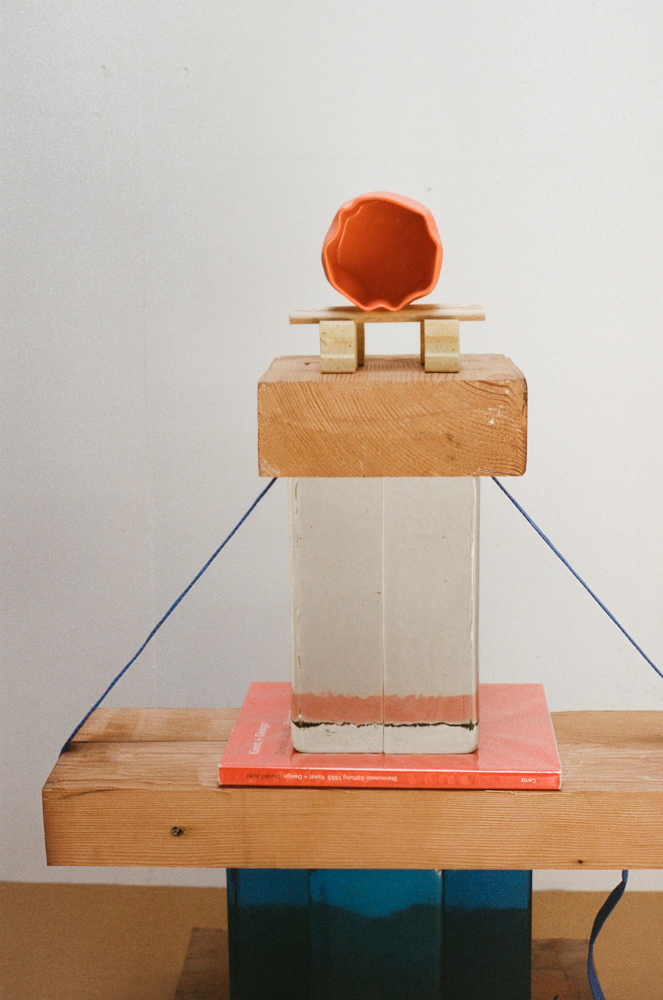
PROJECT 1 ︎︎︎ The Original Thought, In conversation with Layla Cluer for Paradiso Magazine.
Role: Art Director & Styling
Photographer: Layla Cluer
Photographer: Layla Cluer
To tackle the concept of the original thought is somewhat of a Sisyphean task. We modern folk might call it a ‘chicken and egg’ situation. What’s left to do but unravel, ponder, perceive and reproduce, as we each consider our ownership of tangible objects, imbuing them with our individual sentiments and histories.
In a way, when we talk about collections and stories and how they might play a part in becoming fodder for the continuation of someone else’s creative practice, we are talking about something ephemeral and unable to be defined. Each new rendition of an idea sees artists and makers partake in the collective act of enshrining new meaning, or further confirming its original intent.
What follows is not simply a conversation about objects and their histories. It is an attempt to draw ourselves, as both friends and collaborators, into a new set of relations through our objects, influences and ideas. The accompanying assemblages were conceived in much the same way…
Lora Ward: There’s a lot of things for us to talk about today, let’s start with your work. I love the amalgamation of sculpture and tableware / objects of everyday life found in the pieces you make. Have any specific life experiences directly influenced the form and design of a particular piece?
Layla Cluer: Thanks! This is hard to speak to in a concise way, there are so many reasons and experiences that led me to start making tableware in a sculptural manner. But one of the reasons I think the project has sustained my interest, so far at least, is the relational nature of tableware. I try to make my work robust enough that it can be used every day but also imbue it with sculptural qualities that might ask the users to think a little more deeply about how objects are made, how objects can be used and how objects relate to the body and memory. There's only so much one can achieve within the space of a plate or a bowl. Yet, it is because such objects are connected to people’s everyday lives that they can be imbued with conceptual value and humour!
LW: I think a good example of this is my late uncle Ken Price’s understanding of the cup as a refined form within which exploration can occur. He says, “As the cup is its own subject matter it doesn’t have to be about anything other than itself. The cup form presents a preordained framework that is flexible and lots of artists have used it to express their ideas and feelings” (fig. 3-5).
LC: I love that idea! I think my work straddles a line similar, but always with an endeavour to enlarge such a framework. I like to think of each design in terms of Umberto Eco's notion of "the open work" –– I’m always trying to create objects and forms that are open enough that they will be performed slightly differently each time they are used. For example, the “Cup for Fingers”, which has a pretty unconventional form, asks the user to choose their own way to approach the act of holding and drinking from a cup. Each nook and cranny of its sculpted surface will fit your fingers perfectly but there is no obvious choice, you have to find your own way, drinking becomes a journey…
Actually, when I started my hope was that the project as a whole would form an archive that speaks to the slippery nature of functional objects and the somewhat sponges edges of their disciplines – this is where the name softedge comes from. I wanted the function of each piece to remain ambiguous or open to interpretation, having only a number as it’s identifier. But in the end, I softened and gave pieces names as well because it helped people access them.
LW: It’s interesting this notion of the archive within your works. Do you think it stems from your earlier works which employed almost museological modes of display?
LC: Definitely, I’ve always been a collector of images and objects, but it wasn’t until I went to art school that I really investigated they way strategies of display are able to shift an object’s value and interpretation. For a time I was really interested in the use of ‘exhibition furniture' and the work of artists like Carol Bove and Mark Manders, who’s “Reference Book” (fig. 6-8) is part of the sculptures today. But over time that shifted, I became more interested in archival research methods and how you might excavate the social and material histories of specific objects in order to tell new stories or conjure elaborate narratives.
LW: My interests in collections and objects very much stems from the work of Donald Judd (fig. 1-2) and his fascination with the everyday object. There was a certain intertwining between his own artwork and his everyday life through the objects he kept and displayed throughout his house. His intrigue with traditional Japanese arrangement and his obsession with the order of collections is prevalent in all of his homes today, and serves as an example of the value these objects can hold in our life. This duality between life object and artwork is definitely evident in Ken’s work too, and is the reason I have been invested in learning more about them.
In a way, when we talk about collections and stories and how they might play a part in becoming fodder for the continuation of someone else’s creative practice, we are talking about something ephemeral and unable to be defined. Each new rendition of an idea sees artists and makers partake in the collective act of enshrining new meaning, or further confirming its original intent.
What follows is not simply a conversation about objects and their histories. It is an attempt to draw ourselves, as both friends and collaborators, into a new set of relations through our objects, influences and ideas. The accompanying assemblages were conceived in much the same way…
Lora Ward: There’s a lot of things for us to talk about today, let’s start with your work. I love the amalgamation of sculpture and tableware / objects of everyday life found in the pieces you make. Have any specific life experiences directly influenced the form and design of a particular piece?
Layla Cluer: Thanks! This is hard to speak to in a concise way, there are so many reasons and experiences that led me to start making tableware in a sculptural manner. But one of the reasons I think the project has sustained my interest, so far at least, is the relational nature of tableware. I try to make my work robust enough that it can be used every day but also imbue it with sculptural qualities that might ask the users to think a little more deeply about how objects are made, how objects can be used and how objects relate to the body and memory. There's only so much one can achieve within the space of a plate or a bowl. Yet, it is because such objects are connected to people’s everyday lives that they can be imbued with conceptual value and humour!
LW: I think a good example of this is my late uncle Ken Price’s understanding of the cup as a refined form within which exploration can occur. He says, “As the cup is its own subject matter it doesn’t have to be about anything other than itself. The cup form presents a preordained framework that is flexible and lots of artists have used it to express their ideas and feelings” (fig. 3-5).
LC: I love that idea! I think my work straddles a line similar, but always with an endeavour to enlarge such a framework. I like to think of each design in terms of Umberto Eco's notion of "the open work" –– I’m always trying to create objects and forms that are open enough that they will be performed slightly differently each time they are used. For example, the “Cup for Fingers”, which has a pretty unconventional form, asks the user to choose their own way to approach the act of holding and drinking from a cup. Each nook and cranny of its sculpted surface will fit your fingers perfectly but there is no obvious choice, you have to find your own way, drinking becomes a journey…
Actually, when I started my hope was that the project as a whole would form an archive that speaks to the slippery nature of functional objects and the somewhat sponges edges of their disciplines – this is where the name softedge comes from. I wanted the function of each piece to remain ambiguous or open to interpretation, having only a number as it’s identifier. But in the end, I softened and gave pieces names as well because it helped people access them.
LW: It’s interesting this notion of the archive within your works. Do you think it stems from your earlier works which employed almost museological modes of display?
LC: Definitely, I’ve always been a collector of images and objects, but it wasn’t until I went to art school that I really investigated they way strategies of display are able to shift an object’s value and interpretation. For a time I was really interested in the use of ‘exhibition furniture' and the work of artists like Carol Bove and Mark Manders, who’s “Reference Book” (fig. 6-8) is part of the sculptures today. But over time that shifted, I became more interested in archival research methods and how you might excavate the social and material histories of specific objects in order to tell new stories or conjure elaborate narratives.
LW: My interests in collections and objects very much stems from the work of Donald Judd (fig. 1-2) and his fascination with the everyday object. There was a certain intertwining between his own artwork and his everyday life through the objects he kept and displayed throughout his house. His intrigue with traditional Japanese arrangement and his obsession with the order of collections is prevalent in all of his homes today, and serves as an example of the value these objects can hold in our life. This duality between life object and artwork is definitely evident in Ken’s work too, and is the reason I have been invested in learning more about them.
This book of Ken’s in front of me contains both cups and vessels (fig. 3-5). It’s actually the catalogue from an exhibition that he worked on for many years. The exhibition consisted of shrines he put together; an assemblage of his interest in Mexican death shrines and Japanese Shinto shrines.
LC: They are alters too! It’s interesting, I find that a lot of the books you collect, and the references you use often, largely relate to Californian creatives – their homes, collections, journeys and crafts. I can see it heavily influences everything you do, particularly the way in which you curate books. It makes a lot more sense seeing this side of Ken’s practice, now knowing that he’s your uncle.
LW: Yep, for sure. I would say that it also stems back to my family, Dad having grown up in California. He left the US in the early 70s after finding a loophole that exempted him from the Vietnam War draught. He built a sail boat and departed with 3 of his friends to Tahiti, where he later met my mother. The pair of Levis jeans and the hammer that he used to build the yacht in 1972 is here with me today (Hammer fig. 3-5 / Jeans fig. 13-14)
LC: I think quite early on in our friendship we drew parallels between our fathers’ seafaring histories. My Dad still spends a fair portion of his time bobbing around the South Pacific on a leaky yacht in search of waves. And I grew up hearing stories of his childhood spent in Africa, Papua New Guinea and Islands throughout the Pacific, along with the equally nomadic decades that followed. But it wasn’t until my grandmother died that I discovered the logbook she had litigiously kept during those years along with the scrapbook (fig.6-8) and photographs (fig. 9,11-12) which we can see in these arrangements.
LW: The world is so connected these days, it seems impossible to have experiences like these anymore.
LC: Exactly, I think that’s what first sparked my impulse to make. Feeling like nothing I could so would live up to these kinds of stories, so instead I have to travel in my imagination.
LW: Speaking of making, perhaps we can return to your work and the topic of cups.
LC: Yeah, I really like the cup typology because it is the most intimate and immediate of everyday ceramic objects. Coincidentally, almost half of my current body of work is cups. In fact, the longer we talk here, the more I think that I should exclusively make them. It would be interesting to have such a singular subject matter.
LW: Yeah I think Ken touched on that a lot in his work. He once described in an interview why he chose the cup when there are so many other types of vessels. He said, “What’s different about the cup? Well, for one thing, using one means you hold it to your hand and hold it to your mouth so you drink some hot coffee or tea from it. That’s a connection you cant have with a vase of a plate. So the cup is a universal symbol of nourishment and sensual life.” (fig. 3-5) I see your pieces being very much symbols of nourishment!
LC: Totally. For me, there is a really direct correlation between cooking and ceramics––in terms of the processes. More specifically with baking. They both have rules and are based on science but afford the maker or baker infinite possibilities. Baking transforms small amounts of flour, water and yeast into bread which has vastly more nutritional value not to mention complex structure and flavour. Pottery turn minerals and water into stone, through the application of heat it completely alters their state and causes new chemical bonds to form––bonds that will stay in place for tens of thousands of years. And both have developed in tandem since the first cooking pots of the late Paleolithic period. I'm not sure you can really separate them!
LW: That’s true. Objects and vessels, in particular, not only hold food, but ideas, stories and memories.
LC: And they can lead to discoveries! Like this cup which is actually a silver trophy won by my great-great grandfather’s horse, Miss Polly (fig. 9-12). It was given to me by my grandmother for my 21st birthday along with a story which explained how a freak tornado had swept through the town where my family lived in Yorkshire. The tornado completely destroyed the family house and this cup, which presumably took pride of place on the mantel, was one of the only things to be recovered from the rubble, albeit in a slightly deformed state. Something about that story and the way this cup became the central protanagist has stuck with me and led me to follow the materials histories of other objects in more tangential and speculative ways like we have done today. In a way these objects and their stories are just as important as any other materials or tools you might find in the studio, they could be seen as the building blocks of ideas and creativity.
LC: They are alters too! It’s interesting, I find that a lot of the books you collect, and the references you use often, largely relate to Californian creatives – their homes, collections, journeys and crafts. I can see it heavily influences everything you do, particularly the way in which you curate books. It makes a lot more sense seeing this side of Ken’s practice, now knowing that he’s your uncle.
LW: Yep, for sure. I would say that it also stems back to my family, Dad having grown up in California. He left the US in the early 70s after finding a loophole that exempted him from the Vietnam War draught. He built a sail boat and departed with 3 of his friends to Tahiti, where he later met my mother. The pair of Levis jeans and the hammer that he used to build the yacht in 1972 is here with me today (Hammer fig. 3-5 / Jeans fig. 13-14)
LC: I think quite early on in our friendship we drew parallels between our fathers’ seafaring histories. My Dad still spends a fair portion of his time bobbing around the South Pacific on a leaky yacht in search of waves. And I grew up hearing stories of his childhood spent in Africa, Papua New Guinea and Islands throughout the Pacific, along with the equally nomadic decades that followed. But it wasn’t until my grandmother died that I discovered the logbook she had litigiously kept during those years along with the scrapbook (fig.6-8) and photographs (fig. 9,11-12) which we can see in these arrangements.
LW: The world is so connected these days, it seems impossible to have experiences like these anymore.
LC: Exactly, I think that’s what first sparked my impulse to make. Feeling like nothing I could so would live up to these kinds of stories, so instead I have to travel in my imagination.
LW: Speaking of making, perhaps we can return to your work and the topic of cups.
LC: Yeah, I really like the cup typology because it is the most intimate and immediate of everyday ceramic objects. Coincidentally, almost half of my current body of work is cups. In fact, the longer we talk here, the more I think that I should exclusively make them. It would be interesting to have such a singular subject matter.
LW: Yeah I think Ken touched on that a lot in his work. He once described in an interview why he chose the cup when there are so many other types of vessels. He said, “What’s different about the cup? Well, for one thing, using one means you hold it to your hand and hold it to your mouth so you drink some hot coffee or tea from it. That’s a connection you cant have with a vase of a plate. So the cup is a universal symbol of nourishment and sensual life.” (fig. 3-5) I see your pieces being very much symbols of nourishment!
LC: Totally. For me, there is a really direct correlation between cooking and ceramics––in terms of the processes. More specifically with baking. They both have rules and are based on science but afford the maker or baker infinite possibilities. Baking transforms small amounts of flour, water and yeast into bread which has vastly more nutritional value not to mention complex structure and flavour. Pottery turn minerals and water into stone, through the application of heat it completely alters their state and causes new chemical bonds to form––bonds that will stay in place for tens of thousands of years. And both have developed in tandem since the first cooking pots of the late Paleolithic period. I'm not sure you can really separate them!
LW: That’s true. Objects and vessels, in particular, not only hold food, but ideas, stories and memories.
LC: And they can lead to discoveries! Like this cup which is actually a silver trophy won by my great-great grandfather’s horse, Miss Polly (fig. 9-12). It was given to me by my grandmother for my 21st birthday along with a story which explained how a freak tornado had swept through the town where my family lived in Yorkshire. The tornado completely destroyed the family house and this cup, which presumably took pride of place on the mantel, was one of the only things to be recovered from the rubble, albeit in a slightly deformed state. Something about that story and the way this cup became the central protanagist has stuck with me and led me to follow the materials histories of other objects in more tangential and speculative ways like we have done today. In a way these objects and their stories are just as important as any other materials or tools you might find in the studio, they could be seen as the building blocks of ideas and creativity.
